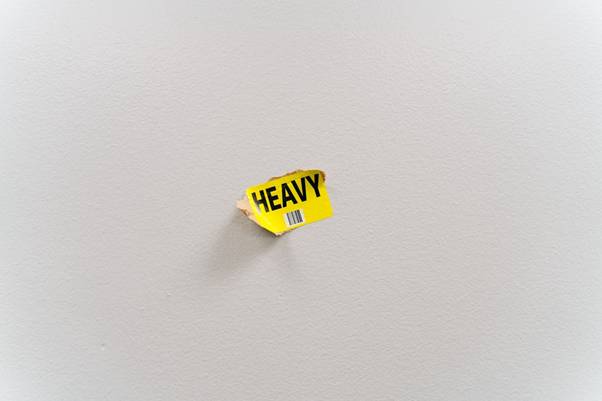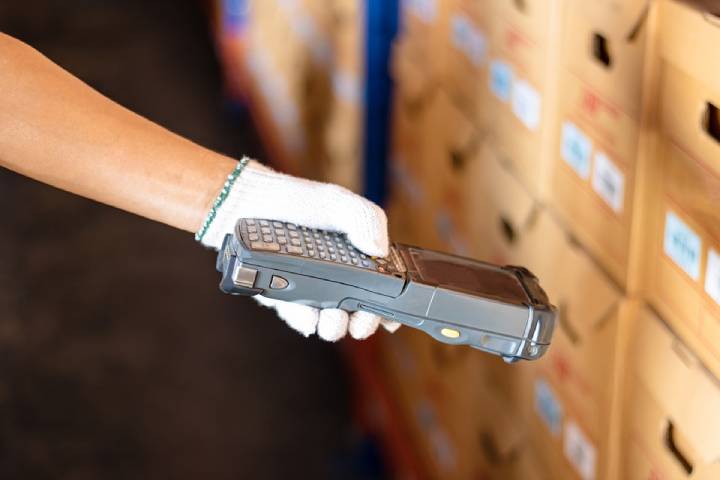As a manufacturer, your inventory is your most important asset – but managing it can quickly become a nightmare. Whether you’re dealing with lost stock, hefty import fees, or breakages on the factory floor, there are all sorts of factors that can disrupt your supply chain. So, how can you streamline the process and take back control of your inventory?
The answer is barcode scanning. Although this can’t solve every problem causing bottlenecks in your supply chain, it can significantly speed up your stock count, making it much easier to calculate your stock levels and avoid negative inventory.
In this blog post, we’ll explain how barcode scanning for manufacturers works and how it can optimise your inventory control.
1. How Does Barcode Scanning Work in Manufacturing?

Barcodes are a machine-readable representation of your product data. This enables you to identify items – and store information – quickly and conveniently. There are two different kinds of barcode, including the traditional one-dimensional barcodes you would find on things in a shop and two-dimensional QR codes.
While traditional barcodes are great for identifying products, QR codes are excellent for storing excess information, such as supplier documents or contact details.
You’ll need a specialist scanning device to scan the one-dimensional barcodes (prices start at about £50), but most modern smartphone cameras have been designed to read QR codes.
2. What are the Benefits of Barcode Scanning?
Barcode scanning for manufacturers can have a range of benefits, all of which will help you optimise your supply chain.
1. Improved Accuracy
They say to err is human. While this may be an inevitable fact of life, it can cause severe problems in the manufacturing industry. If you’re relying on a worker to take stock counts or log new deliveries, the risk of human error can leave you with inaccurate data – and this can lead to bottlenecks and wasted funds.
Barcodes remove this risk altogether. Instead of hiring somebody to count each item individually and write that information down, all they need to do is point the scanner at the barcode and click. This information can then be uploaded into your system, giving you fast, reliable data every time.
2. More Information at Your Fingertips
When you use QR codes, you can access all sorts of information about an item’s origin, price, and expiry date with one single click. Keeping track of all this data without a barcode scanning system can be very labour-intensive, requiring you to balance several different documents and contracts.
By using barcodes for inventory control, you can also view the relevant sales information. All you need to do is look up a barcode in your system and see how many units you’ve sold.
3. Cost-Effective Solution
Once you’ve implemented your barcode scanning system, you can reap the rewards. This process isn’t costly to install, but it will give you benefits that last long into the future, making it a one-time investment with a great payoff.
The cost of barcode scanning will depend on whether you want a simple data-capture scanner or an industrial tool with a fully integrated system. But whichever you pick, this is still a cost-effective solution that will prevent costly mistakes with your inventory management.
Tech Trends
Related posts
Leave a Reply Cancel reply
Hot Topics
Categories
- Ads (5)
- Animes (25)
- Artificial Intelligence (AI) (35)
- Augmented Reality (AR) (10)
- Automotive (9)
- Bitcoin (16)
- Blockchain (24)
- Business (244)
- Business Intelligence (3)
- Cloud Computing (23)
- Computer (128)
- Concrete Technology (1)
- Cryptocurrency (10)
- Cybersecurity (42)
- Data Science (9)
- Database (4)
- DevOps (6)
- Digital Marketing (76)
- Digital Workplace (14)
- Ecommerce (1)
- Education (28)
- Electric Vehicle (EV) (1)
- Electronics & Hardware (17)
- Entertainment (42)
- Fabrication (3)
- FAQ's (1)
- Finance & Marketing (47)
- Gadgets (35)
- Games (8)
- Gear (29)
- HTTPS (1)
- Industry (46)
- Information Technology (90)
- Internet (413)
- Internet of Things (IoT) (41)
- Job (25)
- Machine Learning (6)
- Marketing (92)
- Mobile Apps (21)
- Movies (11)
- Natural Language Processing (6)
- News & Trends (109)
- Programming (4)
- Science & Technology (235)
- Security (81)
- SEO (56)
- Services (36)
- Social Media (73)
- Software (99)
- Sports (1)
- Technology (306)
- Telecom (6)
- TikTok (5)
- Tours & Travels (9)
- Uncategorized (11)
- Virtual Reality (VR) (7)
- VoIP (4)
- Web Technology (42)
- Workforce (17)
- Workspace (6)



Stay connected